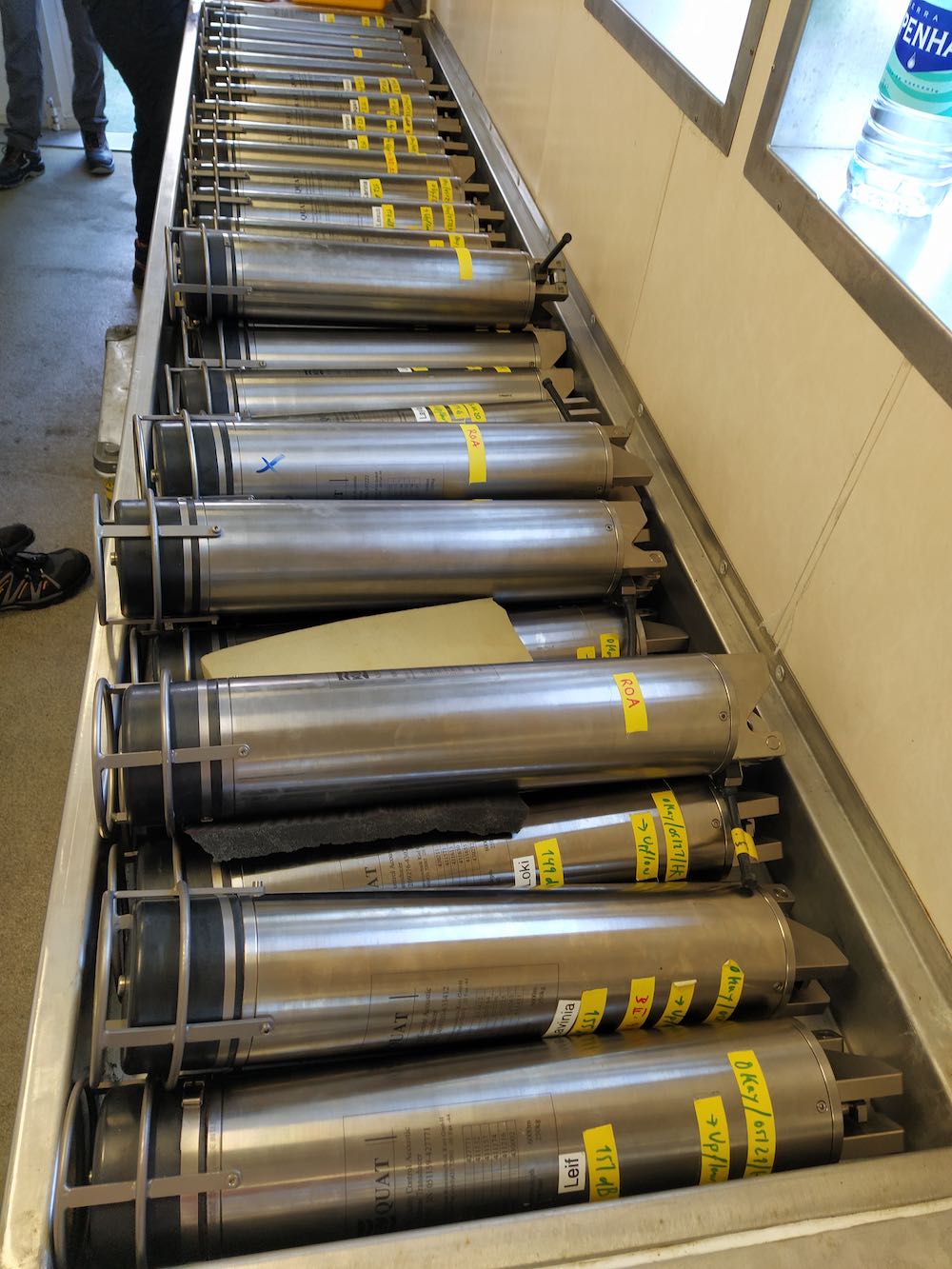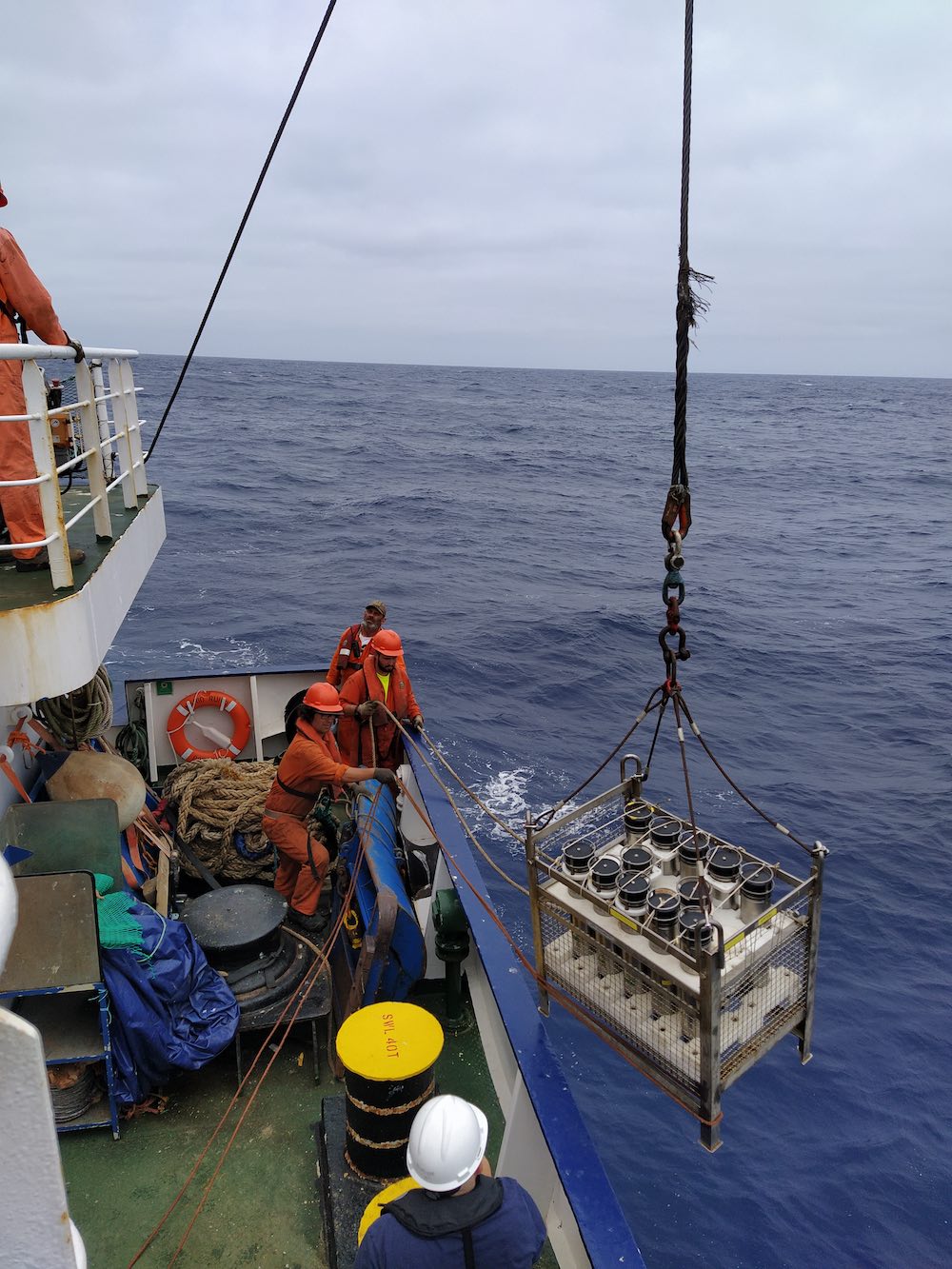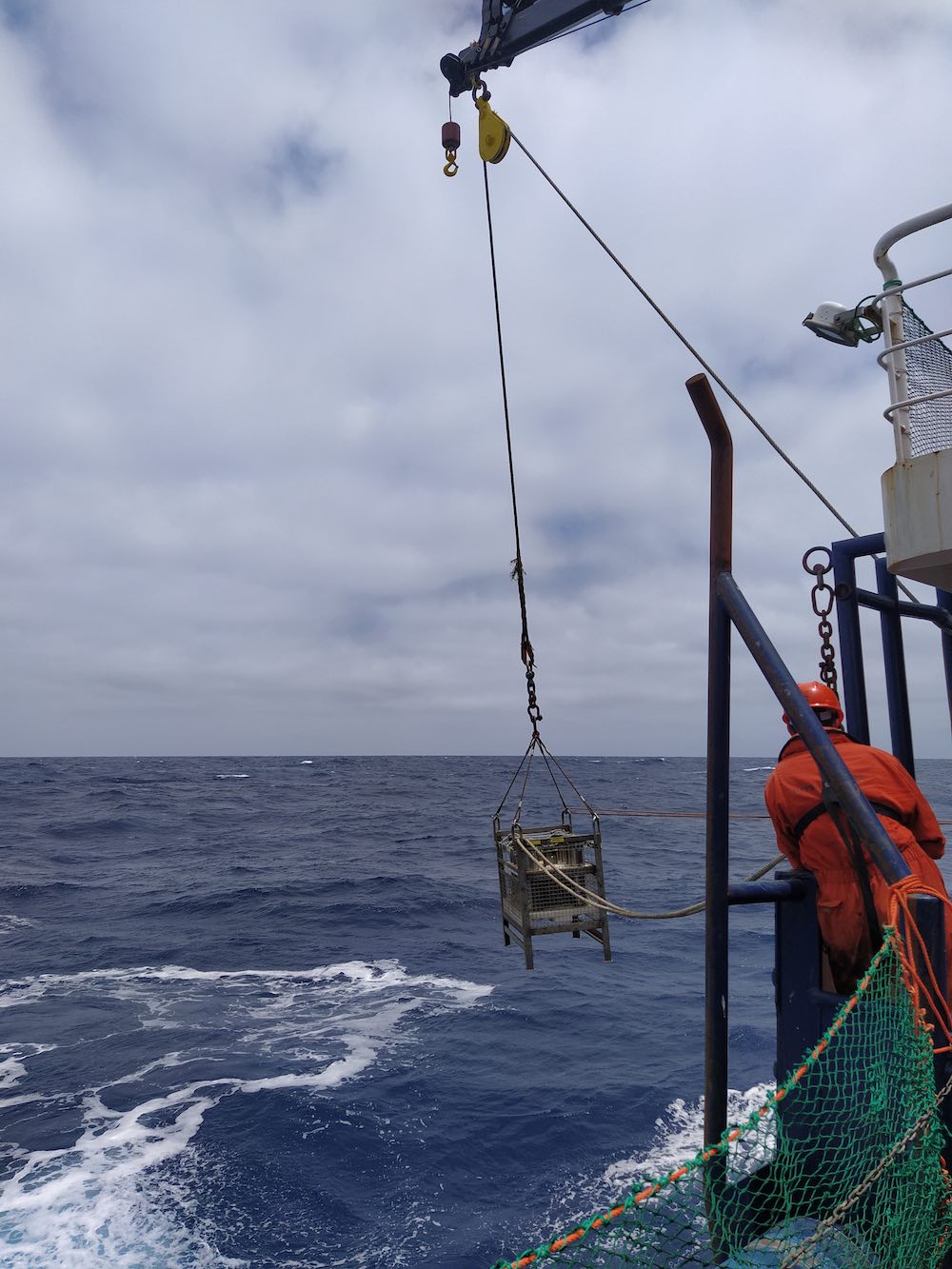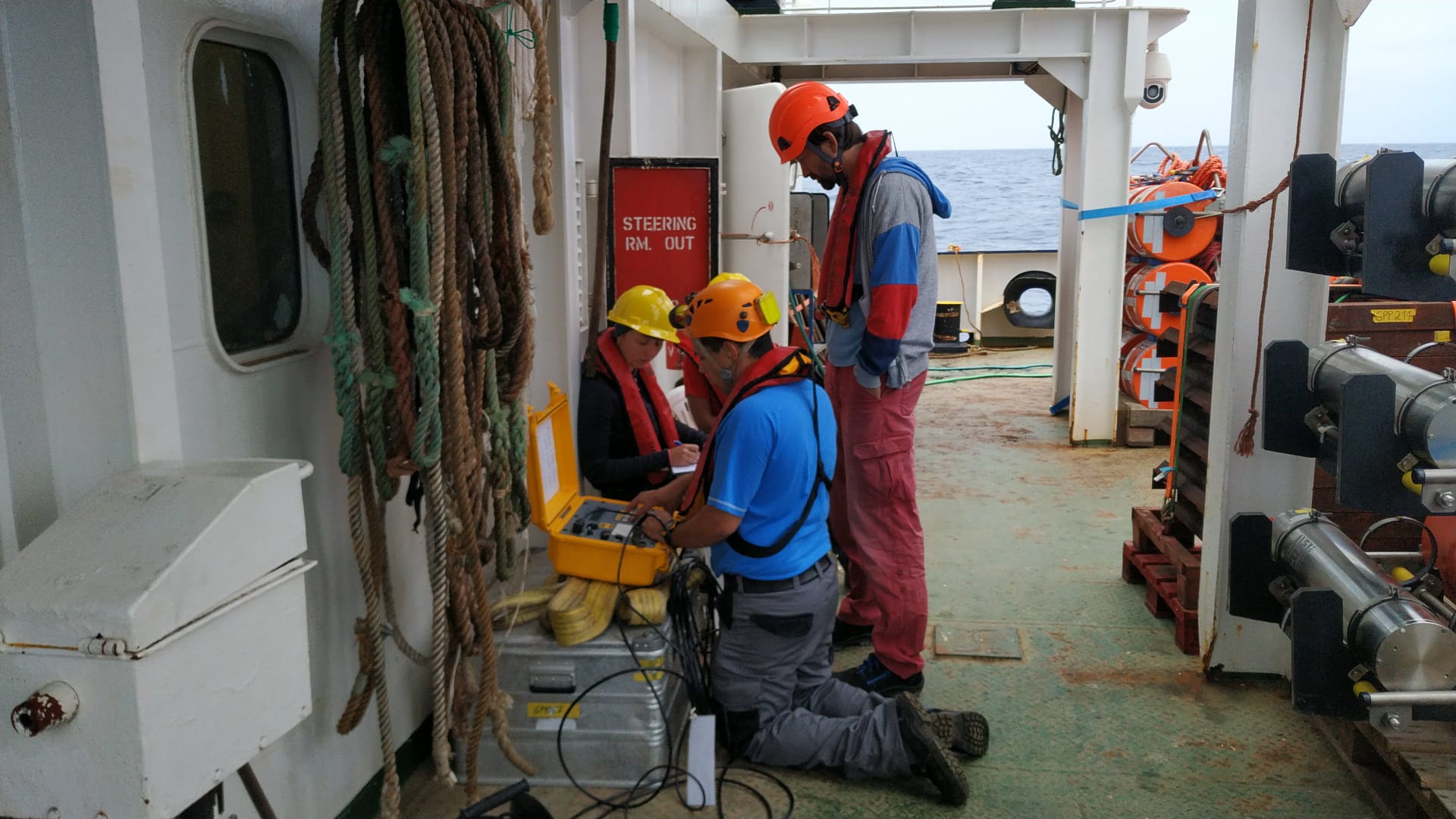By Theresa Rein
On our first day on board of the RV Mário Ruivo we had to get used to the steady movement of the vessel and overcome the seasickness. Luckily the sea became calmer during the day and most of us felt much better after lunchtime, so we could test the releasers! Bunch of releasers ready to be tested.
The releasers are crucial for the collection of the OBSs after their deployment. During the deployment the releasers are disabled, they are ‘sleeping’. For the recovery of the OBSs, we will navigate to the point we left the OBS and enable, ‘awake’, them. We are communicating with the releaser via acoustic waves, which are sent out by a probe head. The probe head is connected to a special computer, from which we control the communication. Once the releaser is awake, we tell it to loose (release) the anchor and the OBS will float up to the surface. Then, we ‘only’ need to find the OBS on the water surface. If the communication fails, the tube carries an auto-releaser, which is programmed to free the anchor after two years. Then there is nothing else for it, but hope somebody will find the instruments and send it to the OBS-Pools.
Since this process is important for the recovery, we need to ensure the functionality. To do so, we tested the enabling, disabling and releasing command on board and additionally in the ocean. For the test in the ocean, we put 12 releasers in a cage and dunked them. The cage with 12 releasers is lifted with a crane The cage is ready to be dropped into the sea.

At a depth of around 2000 m we verified, if the communication is still working. Testing the communication between the computer and the releasers.
Today we successfully tested 36 releasers. Now, we are ready to prepare the OBSs for deployment!

















